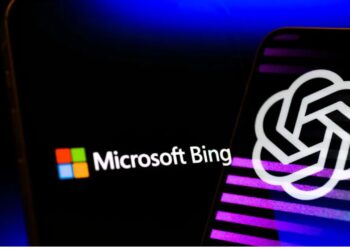Boeing’s upcoming maiden crewed test flight of the Starliner spacecraft marks a pivotal moment in the aerospace industry, poised to challenge SpaceX’s dominance in astronaut launches. Scheduled for Saturday, this mission is crucial for Boeing, aiming to validate its capabilities and reliability in transporting astronauts to the International Space Station (ISS).
Boeing’s Past Issues and Current Confidence
Boeing has encountered significant setbacks in the development of its Starliner capsule, ranging from technical malfunctions to budget overruns. Issues like a malfunctioning pressure valve and a helium leak have plagued previous test flights, raising doubts about the spacecraft’s readiness. Despite these challenges, both NASA and Boeing officials have expressed confidence in addressing these issues ahead of the upcoming mission. Mark Nappi, vice president of Boeing’s commercial crew program, acknowledged the inherent risks of a test flight, suggesting that unforeseen challenges could still arise during the mission.
The Mission and Its Stakes
With billions of dollars invested and years behind schedule, Boeing’s Starliner test flight represents a make-or-break moment for the company. The success of this crewed mission to the ISS will not only validate Boeing’s technological prowess but also restore confidence among stakeholders and potential customers. Failure to meet objectives could further delay Boeing’s ambitions in the commercial crew market, impacting its competitive stance against SpaceX.
Boeing vs. SpaceX
Since 2020, SpaceX has dominated the astronaut launch market with its reliable Crew Dragon capsule, becoming NASA’s preferred choice for crewed missions to the ISS. Boeing aims to challenge this supremacy with Starliner, emphasizing its unique design features and operational capabilities. However, SpaceX’s established track record and operational reliability pose significant challenges for Boeing in gaining market traction.
The Crew and Their Mission
The Starliner’s inaugural crew includes seasoned NASA astronauts Sunita “Suni” Williams and Barry “Butch” Wilmore, each bringing extensive experience from previous space missions. Despite the spacecraft’s autonomous capabilities, the crew’s expertise will be crucial, potentially requiring manual intervention during critical mission phases. Their mission involves docking with the ISS for approximately a week-long stay, conducting essential experiments and tasks aboard the orbiting laboratory.
Contingency Plans and Historical Context
Boeing has outlined multiple backup launch windows to mitigate potential delays, underscoring the complexity and sensitivity of space missions. Historically, such contingencies have proven vital, ensuring mission success amidst unforeseen challenges. This mission also harks back to NASA’s earlier space endeavors, echoing the legacy of pioneering missions like Mercury, which first sent American astronauts into orbit.
The Final Leg: Return to Earth
Assuming a successful launch and docking at the ISS, the Starliner faces its final test—returning the crew safely to Earth. The spacecraft’s innovative parachute and airbag-assisted landing system will be deployed in the US Southwest Desert, marking a historic first for crewed NASA missions. This phase of the mission highlights Boeing’s commitment to safe and reliable astronaut transportation capabilities.
A Turning Point or More Troubles
Boeing’s upcoming Starliner mission represents more than a technical achievement; it symbolizes the company’s resilience and determination to compete in the evolving commercial space market. Success would not only validate Boeing’s technological advancements but also position the company as a formidable competitor to SpaceX. Conversely, any setbacks could further delay Boeing’s ambitions, raising questions about its future in the astronaut launch sector.
As Boeing prepares for its highly anticipated Starliner test flight, the aerospace industry watches with keen interest. The outcome of this mission will not only impact Boeing’s standing in the astronaut launch market but also shape the future of commercial space travel. Whether it marks a turning point or reveals further challenges, the Starliner’s journey underscores the complexities and aspirations driving the next generation of space exploration.
Is Boeing finally ready to compete with SpaceX in the astronaut launch market?
Boeing aims to challenge SpaceX with the scheduled launch of its Starliner astronaut capsule. However, given its history of setbacks, success is still uncertain.
Will the Starliner actually make it off the ground this time?
The CST-100 Starliner is set to launch at 12:25 p.m. ET from NASA’s Kennedy Space Center. Previous delays raise doubts, but NASA and Boeing assure that issues have been resolved.
Can we trust Boeing’s assurances after so many previous setbacks?
Past issues, including a malfunctioning pressure valve and helium leak, have been addressed. Yet, confidence remains cautious given the track record.
What’s at stake for Boeing with this mission?
Boeing’s project is years behind schedule and over $1.5 billion over budget. Success is critical to restore confidence and financial stability.
How does Boeing’s Starliner compare to SpaceX’s Crew Dragon?
SpaceX’s Crew Dragon has been NASA’s reliable vehicle for ISS missions since 2020. Boeing must prove Starliner’s reliability and success to compete.
What if the Saturday launch is postponed?
Boeing has backup launch windows, but further delays could push the mission back weeks or months, impacting its standing and reputation.







